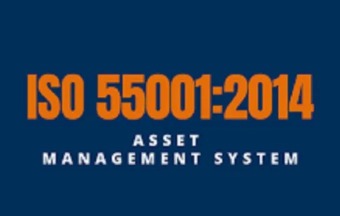In every organization, assets — whether physical, financial, or intangible — play a vital role in achieving business objectives. Managing these assets efficiently is essential for maintaining performance, minimizing risks, and maximizing value throughout their lifecycle. To support this goal, the International Organization for Standardization (ISO) developed ISO 55001:2014, a globally recognized standard for Asset Management Systems.
What is ISO 55001:2014?
ISO 55001:2014 provides a structured framework for establishing, implementing, maintaining, and improving an organization’s Asset Management System (AMS). The standard is designed to help organizations manage the lifecycle of their assets — from acquisition and operation to maintenance and disposal — in a systematic and cost-effective manner.
ISO 55001 applies to all types of assets and organizations, regardless of size, sector, or industry. It ensures that assets deliver maximum value while minimizing costs and risks associated with their ownership and use.
The standard is part of the ISO 55000 series, which also includes:
-
ISO 55000: Overview, principles, and terminology.
-
ISO 55002: Guidelines for applying ISO 55001.
Objectives of ISO 55001
The main objective of ISO 55001 is to help organizations establish a proactive approach to asset management. Key goals include:
-
Maximizing asset value through efficient management and decision-making.
-
Reducing operational risks, costs, and downtime.
-
Ensuring assets meet performance, safety, and compliance requirements.
-
Enhancing organizational transparency and accountability.
-
Supporting sustainability and long-term growth.
By aligning asset management with organizational strategy, ISO 55001 ensures that every decision regarding assets contributes to overall business objectives.
Key Principles of ISO 55001
ISO 55001 is built on several core principles that drive effective asset management:
-
Lifecycle Management: Focuses on optimizing performance and costs across the entire lifespan of assets.
-
Risk-Based Thinking: Encourages organizations to identify, assess, and control asset-related risks.
-
Value Creation: Ensures that assets contribute positively to the organization’s goals and stakeholder value.
-
Integration: Aligns asset management with other management systems like ISO 9001 (Quality) and ISO 14001 (Environmental).
-
Continuous Improvement: Promotes regular review and enhancement of asset management performance.
Benefits of ISO 55001 Certification
Implementing ISO 55001 offers a wide range of benefits for organizations that rely heavily on physical or infrastructure assets:
-
Improved Asset Performance: Enhances reliability, lifespan, and operational efficiency.
-
Reduced Costs: Lowers maintenance, downtime, and replacement expenses through proactive planning.
-
Better Risk Management: Identifies potential failures and mitigates their impact.
-
Regulatory Compliance: Helps meet legal, safety, and environmental requirements.
-
Enhanced Decision-Making: Provides accurate asset data for informed strategic planning.
-
Stakeholder Confidence: Demonstrates accountability, transparency, and a commitment to sustainability.
Conclusion
In today’s competitive and resource-conscious environment, organizations must manage their assets wisely to maintain profitability and resilience. ISO 55001:2014 provides a proven framework for achieving these goals through systematic asset management.
By implementing ISO 55001, businesses can optimize performance, reduce costs, manage risks, and create sustainable value over the long term. It is more than just a certification — it’s a strategic approach to achieving operational excellence and driving continual improvement across all asset-related activities.






